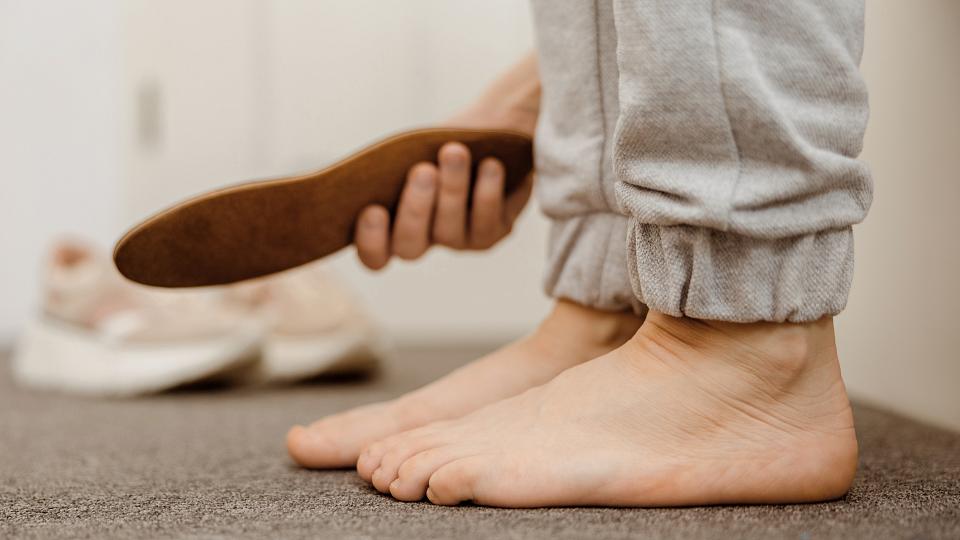
What Is Ankle Arthritis?
Ankle arthritis occurs when the cartilage between your shin bone (tibia) and your top foot bone (talus) wears away. Cartilage is the flexible tissue that cushions your joints and absorbs shock. Loss of cartilage can cause pain, swelling, or stiffness.
Ankle Arthritis Symptoms
Arthritis in your ankle may be painful. It may also feel like your ankle has turned, so you’re walking primarily on the inside or outside of your foot. If you have ankle arthritis, you may experience the following symptoms:
- limited range of motion,
- pain, and
- swelling.
Stages of Ankle Arthritis
Doctors classify ankle arthritis based on the extent of cartilage damage. The most severe stage of ankle arthritis is end-stage arthritis, which occurs when you have almost no cartilage in your ankle joint and your bones rub against each other. However, your doctor will base your treatment plan on the severity of your symptoms.
Find a Foot & Ankle Specialist Near You
Causes of Arthritis in the Ankle
You can’t always pinpoint one reason ankle arthritis develops. The following causes of ankle arthritis are most common:
- Autoimmune and inflammatory diseases, such as rheumatoid arthritis
- History of traumatic injuries to the foot and ankle
- Repetitive (chronic) ankle sprains
Why Choose University of Utah Health?
At U of U Health, you have access to some of the most experienced orthopedic specialists in the Mountain West region. Nationally and internationally recognized experts lead the University Orthopaedic Center, research new treatments, and present findings at international meetings.
Our orthopedic specialists are renowned experts in ankle and foot pain, providing world-class, accessible care. We specialize in foot and ankle surgery with extensive experience treating the most complex cases.
Ankle Arthritis Treatment
Treating ankle arthritis focuses on reducing your pain and increasing your function. There’s no way to reverse arthritis, but a tailored treatment plan reduces your symptoms.
We typically start with the following nonsurgical therapies:
- Ankle arthritis medications—Anti-inflammatory medications may relieve symptoms for some patients. We also may offer steroid injections when oral medications alone aren’t providing enough pain relief.
- Arthritis ankle brace—Your treatment plan may include a custom ankle brace. These braces can help stabilize your ankle while decreasing pain and swelling.
- Ankle arthritis therapy—We may refer you to physical therapy to improve your range of motion and decrease pain. A physical therapist typically prescribes a set of exercises performed during office visits and at home between appointments.
Is Walking Good for Ankle Arthritis?
Moving regularly helps you relieve swelling, stiffness, and discomfort. Walking is a beneficial, low-impact exercise for people with ankle arthritis. You will need to avoid high-impact exercises that stress your joints, such as running or jumping.
Ankle Arthritis Surgery
If nonsurgical treatments aren’t relieving your arthritis symptoms, you may consider surgery:
- Ankle fusion surgery—Many patients benefit from this treatment. During this procedure, your surgeon will clean out your joint by removing damaged cartilage. Then they will connect your tibia and talus bones to each other with plates, screws, or bone grafts. Eventually, the two bones should hopefully heal into one, relieving arthritis pain.
- Ankle replacement surgery (ankle athroplasty)—Some patients benefit from this treatment. During an ankle replacement, your surgeon will remove damaged bone and cartilage from your ankle joint. Then they will replace it with metal and plastic parts. The decision to have an ankle replacement or an ankle fusion depends on the individual. Your surgeon can recommend which is best for you.
- Ankle distraction arthroplasty—An ankle distraction arthroplasty is a procedure in which an external device pulls the joint slightly apart. This causes scar tissue to form between the tibia and talus to reduce arthritis pain. Today, ankle distraction arthroplasties are not performed as commonly as ankle fusion or replacement surgeries.
Living With Ankle Arthritis
There is no cure for ankle arthritis, but lifestyle changes and nonsurgical treatments can help manage the condition. Eating a nutritious diet and staying active will help maximize your quality of life and function.
See a health care provider if you have any symptoms of ankle arthritis. Seeking treatment early increases the chances that nonsurgical therapies will effectively manage your symptoms.
Schedule an Appointment With a Foot & Ankle Specialist
Contact our Orthopaedic Services at 801-587-7109 to schedule an appointment with our orthopedic specialists. You can also get a referral to see our orthopedic specialists from your primary care provider.
Some insurance plans require that you get a referral from your primary care provider in order to see a specialist and have it covered under your plan. Check with your insurance carrier to find out if this is required with your plan and get a referral if necessary.


